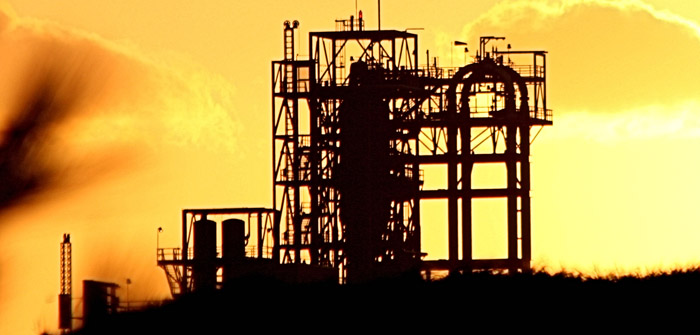A recent article in the New York Times (NYT) by Nathaniel Rich reminded me of how greed, stupidity and arrogance can lead to devastating consequences.
The story is not a new one nor one we haven’t heard before, but mistakenly we might have the idea that this kind of pollution doesn’t happen in America any longer. We couldn’t be more wrong.
In 1998 a farmer in Parkersburg, West Virginia came to Attorney Rob Bilott who was an expert on the Environmental Protection Agency’s regulatory framework, the Safe Drinking Water Act, the Clean Air Act and the Toxic Substances Control Act. Up until then his clients were corporations that he helped meet regulatory guidelines.
But this case was different, there was strong indication that the DuPont chemical company was killing livestock on the farmer’s property from waste in their landfill. A video showed a large pipe running into the farmer’s creek, discharging green water with bubbles on the surface.
Bilott filed a federal suit against DuPont in 1999. In response, DuPont’s in-house lawyer informed him that DuPont and the Environmental Protection Agency (E.P.A.) would commission a study of the property, but their report, which appeared to be a scheme between DuPont and the E.P.A., did not find DuPont responsible for the cattle’s health problems. The culprit, according to the NYT article, was poor nutrition, inadequate veterinary care and lack of fly control.
Bilott then asked for decades of records from DuPont on the chemical waste they were sending to the landfill. He uncovered a memo DePont sent to the E.P.A. that mentioned a substance at the landfill with a cryptic name PFOA, short for perfluorooctanoic acid. DuPont knew then that PFOA caused cancerous testicular, pancreatic and liver tumors in lab animals. One study suggested possible DNA damage from PFOA exposure and a study of DuPont workers linked exposure with prostate cancer.
And yet for decades DuPont pumped hundreds of thousands of pounds of PFOA powder through the outfall pipes of the Parkersburg facility into the Ohio River. Further PFOA entered the local water table, which supplied drinking water to more than 100,000 people in the area.
In August 2000 DuPont finally settled with the original farmer who brought forth the problem. DuPont had for decades been actively trying to conceal their actions. They knew this stuff was harmful and they put it in the water anyway.
In 2005, DuPont reached a $16.5 million settlement with the E.P.A., which finally accused the company of concealing its knowledge of PFOA’s toxicity and presence in the environment in violation of the Toxic Substances Control Act. The fine represented less than two percent of the profits earned by DuPont on PFOA that year.
That was 10 years ago. As of October 2015, 3,535 plaintiffs have filed personal-injury lawsuits against DuPont. The first member of this group was a kidney-cancer survivor awarded $1.6 million. DuPont plans to appeal. DuPont may choose to settle with every afflicted class member. Or DuPont can fight each suit individually, a tactic that tobacco companies have used to fight personal-injury lawsuits. At the rate of four trials a year, DuPont would continue to fight PFOA cases until the year 2890.
DuPont’s continuing refusal to accept responsibility is shocking, as is the fact that the E.P.A. does little to stop corporation’s bad behavior. DuPont, which is currently negotiating a merger with Dow Chemical, has severed its chemical businesses which has spun off into a new corporation called Chemours (it has replaced PFOA with similar fluorine-based compounds designed to biodegrade more quickly — like PFOA, these new substances have not come under any regulation from the E.P.A.).
It turns out PFOA was only one of more than 60,000 synthetic chemicals that companies produce and release into the world without regulatory oversight. Under the 1976 Toxic Substances Control Act, the E.P.A. can test chemicals only when it has been provided evidence of harm. This arrangement, which largely allows chemical companies to regulate themselves, is the reason that the E.P.A. has restricted only five chemicals, out of tens of thousands on the market, in the last 40 years.
The Environmental Working Group has found harmful manufactured fluorochemicals present in 94 water districts across 27 states with drinking water tainted with high levels of PFOA. The only good news in this report is that Oregon is not one of those states.
DuPont is not alone in its outrageous behavior. Companies across the globe freely dump toxic substances into the environment and get off with minimal punishments, sometimes even walking away from a pollution incident without being held accountable.
The top three polluters of carbon dioxide in this country are American Electric Power (AEP), Duke Energy and Southern Company. AEP emits the equivalent of 130 million metric tons of carbon dioxide per year, accounting for about two percent of the annual total, with Duke at 127 million tons and Southern Co. at 118 million.
Some other top environmental polluters and the worst offenders include Williams Energy, Northrop Grumman, Dow Chemical, Koch Industries and U. S. Steel.
Northrop Grumman, aerospace giant, generates tremendous amounts of pollution in the course of its daily operations, including at a now abandoned facility in Calverton, General Electric for years was called to task for its extensive pollution of the Hudson River. Although it eventually took responsibility, the cleanup process is far from over. Dow Chemical’s polluting activities are legendary, spewing dioxins in waterways, among many other pollution offenses, and regulators seem to be prepared to allow that to keep happening.
Today, over 56,000 Americans die every year on the job or from occupational diseases such as black lung and asbestosis and tens of thousands of other Americans fall victim to the silent violence of pollution, contaminated foods, hazardous consumer products and hospital malpractice. These deaths are often the result of criminal recklessness. Big companies that are criminally prosecuted represent only the tip of a very large iceberg of corporate wrongdoing.
It’s absolutely horrendous that unbridled industrial pollution goes without consequences. Yet, companies across the globe freely dump toxic substances into the environment and get off with minimal punishments, sometimes even walking away from a pollution incident without being held accountable.
The Worst Corporations in America
0
Share.





